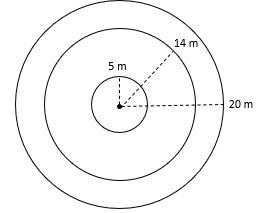Methods
The methods presented on this page is only a selection and summary of all methods used during my study. To view all available information, please download the full report under Downloads in the menu to the left.
Sampling method and Analysis

The 59 plot locations were placed in forested areas around the forest at 300 m distance from the forest edge, and they all included three subplots (5, 14 and 20 m radius). Sampling of the dependent variables, presented in the table below, was distributed within the three subplots to make sampling more time efficient.
As part of species identification of trees, each tree was categorized as pioneer or climax succession type. Pioneer type species are usually fast-growing, early successional, and are shade-intolerant. Climax type species are usually late-successional, indicates forest maturation, and are shade-tolerant.
Values were calculated for each plot location from the dependent parameters (e.g. mean stem diameter or total number of damage). The dependent variables were tested against the three independent variables, number of stoves and houses, and stove age in a series of Multiple Linear Regressions. The variables were tested on a significance level of α= 0.05 with p-values <0.1 were reckoned to indicate a correlation. A chi2-test was used to find potential preference in species and size amongst trees found as stumps.
|
Responsible for this page:
Director of undergraduate studies Biology
Last updated:
05/14/20
